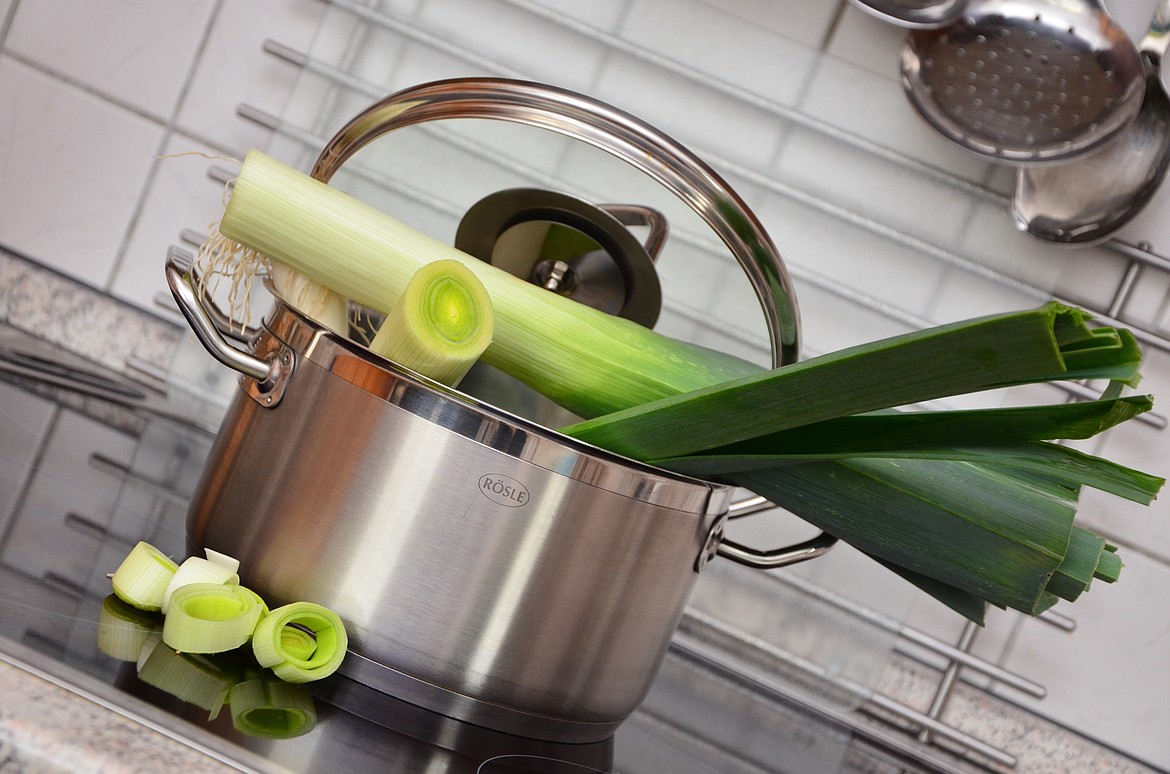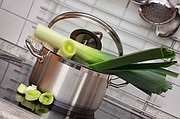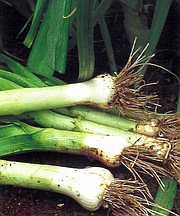Add wild onions to your garden/landscape
I’m a fan of the “small” onion family — green onions, scallions, chives, shallots, leeks — and their wild cousins when I can find them. All members of the allium family, they’re so versatile and time/effort free — not needing the peeling, chopping or slicing of the big guys. I love their convenience and milder touch, as well as the pretty spark of green they provide.
Their wild cousins, when come upon unexpectedly, are equally welcome in my kitchen, but I remember when it wasn’t always that way.
I recall times as a youngster when daddy would come in from milking Buttercup, our black-and-white milk/butter provider as well as pampered pet, grumping that she’d been in the wild onions again and the milk was ruined for butter-making. Mom would fuss a bit, but Grandma would go to work preparing the makings for a creamy onion/venison stew that accepted the flavored milk just fine.
Grandma wasn’t the only one who appreciated the wild onions (Allium) — even second-hand. For centuries here and abroad, cultures have used them and their relatives — garlic, leeks, chives and shallots, as food and medicine. All are members of the lily family (liliaceae).
Most common in our area is the Nodding wild onion (A. cernuum), found year-round with its drooping head of pretty pink and/or white flower clusters and its chive-like hollow stems. Its small bulbs are crunchy and good, and add spark to any salad. The standard Wild Onion, (A. stellatum) holds its pink-flowered head upright on a strong stem, but is rarely seen here, being generally native to the eastern states.
We are also host to wild garlic (A. canadense) which holds up a head of bulblets instead of florets, and these can be gathered at maturity and planted successfully. Both of our natives - nodding onion and wild garlic — are found in meadows, clearings and often clustered in rocky sites near water. I have found both in a variety of places, most reliably at Kootenai Falls. Their chive-like leaves will range from classic hollow to grass-like according to type, so simply sniff them to ensure their “onion-ess.” I mention this because I once read a warning not to mistake them for potentially poisonous
In “Plants of the Lewis and Clark Expedition” an onion resembling A,. stellatum, but with a more low-growing and curved stem, is described as growing in Washington, Idaho and Oregon, and was named for its discoverer, Douglas’s onion (A. douglasii). Another species, taller and topped with sparse white flower heads, was found growing from British Columbia downward to Arizona and thence eastward. It was dubbed Geyer’s onion (A. geyerii).
With some 300 species of the genus Allium, one is likely to run across several varieties, always to be welcomed, as all members of the onion family can lower cholesterol, serve as healing poultice for cuts and burns, and were recommended centuries ago by Gerard and Culpeper as useful in drawing out “disease and vile humours”. Onions were also said to be the bill of fare during the construction of Egypt’s pyramids and China’s Great wall.
Many years past, the neighboring Native American population (Kutenai, Flathead, Kalispel) would go on forays for the bulbs for winter use. The leaves were used as seasoning and in soups, and the bulb stored nicely.
In Jeff Hart’s “Native Plants and Early People” he recalls General George Crook’s “1896 starvation march down the Yellowstone River” in which the men subsisted partially on wild onions. They are, indeed, one of Nature’s best gifts to our larders, and one of the easiest to cultivate. Transplant a few when you find them but don’t give them rich soil and fertilizers — they’re hardy natives! Another blessing, and one more reason to grow native!
While the humble (large) onion wears the crown of world’s No. I veggie, its smaller relatives hold their own in countless dishes — as per the following.
Grapefruit-Avocado Salad w/Ginger-Cassis Dressing
(Serves 6)
2 large ruby grapefruits
1 large head of butter lettuce, leaves separated
1 large avocado, halved, pitted, peeled, sliced
Dressing:
3 tablespoons virgin olive oil
3 tablespoons Crème de Cassis (black currant liqueur) or Grenadine
2 tablespoons finely chopped shallots
2 tablespoons minced (or finely grated) peeled fresh ginger
4 teaspoons sherry wine vinegar
Procedure: Peel and cut off white pith of grapefruits; cut each one crosswise into 4 slices, then cut each slice crosswise in half. Arrange lettuce leaves on platter, tearing larger ones in half. Top with grapefruit and avocado slices.
Whisk Dressing ingredients together in small bowl; season generously with salt and pepper. Drizzle over salad, serve.
The following salad is more of a “how to” than a set-in-stone recipe. You can use any greens you desire in place of spinach, ranging from lettuces to exotics like bok choy, Napa cabbage, etc. Too, add mandarin sections if you wish — and any ‘green oniony” additions of choice.
Winter Green Onion Salad
3 navel oranges
2 pounds spinach
About 1 cup mixed onions w/tops, chopped
8 slices crisp cooked bacon*, crumbled
2 Tbsps. cider vinegar
1 Tbsp. sugar
1/4 tsp. salt
1/4 tsp. dry mustard
1/3 cup olive oil
Chop/slice green onions of choice, including green parts that can be used. Peel and slice oranges; cut slices in half. Wash spinach thoroughly, remove stems and cut leaves into bite-size pieces. In a salad bowl, combine onions, oranges and spinach, tossing to mix well. Toss with bacon and onion mixture. Combine dressing ingredients, shaking or beating well. Toss with salad to incorporate well. Serves 8.
Valle Novak writes the Country Chef and Weekend Gardener columns for the Daily Bee. She can be reached at bcdailybee@bonnercountydailybee.com or by phone at 208-265-4688 between the hours of 8 a.m. to 7 p.m.







